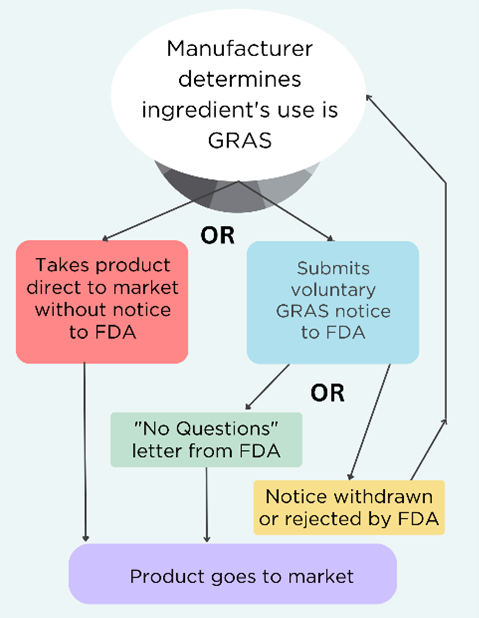Tom Neltner, Senior Director, Safer Chemicals Initiative
Note: This is the first of three blogs in this series. Click here for Blog 2 or Blog 3.
On January 24, 2023, FDA released draft action levels1 for lead in foods intended for babies and young toddlers.2 This proposal is a key step in implementing the agency’s Closer to Zero Action Plan.
For most of these foods, the lead limit would be 10 parts per billion (ppb). FDA proposed a 20-ppb limit for dry infant cereals and single-ingredient root vegetable products (i.e., carrots and sweet potatoes), because these products may have greater lead contamination levels.
The action levels do not apply to five types of foods that young children frequently eat:
- Grain-based snacks such as teething biscuits, sandwich cookies, and puffs—despite FDA’s finding that the biscuits and cookies were two of the three foods with the highest mean lead concentrations that the agency tested for its Total Diet Study from 2018-2020.
- Fruits, cereals, and vegetables that parents use to make homemade foods for their babies and young toddlers—despite those products being likely to be more contaminated, whether or not it was labelled as organic.
- Food marketed for a general audience (e.g., raisins, applesauce, canned food) that parents commonly feed to children —especially families on tight budgets.
- Food marketed to young children over age 2, including kids’ meals and some snack bars.
- Juices, since FDA proposed limits on those in April 2022 and should finalize them this year.
FDA has not set—or even proposed—action levels for lead for any of these foods (except juice). Based on the current Closer to Zero Action Plan schedule, the agency has no plans to establish action levels for the foods listed in items 2 and 3, above.
Do Food Companies Have to Comply with Action Levels?
The short answer is technically and legally “No”—but in practice, “Yes”…with important caveats. As with all guidance, FDA makes clear that:
[G]uidance documents do not establish legally enforceable responsibilities. Instead, guidances describe FDA’s current thinking on a topic and should be viewed only as recommendations, unless specific regulatory or statutory requirements are cited. The use of the word should in FDA guidances means that something is suggested or recommended, but not required.
As a practical matter, action levels serve as limits that companies meet to decrease the risk of having FDA deem their products adulterated and subject to a recall. In addition, FDA expects food facilities to use their Hazard Analysis and Preventive Control Program to achieve action levels by managing their facilities and suppliers to ensure compliance and taking action if problems are revealed through testing or other efforts.
FDA’s Criteria for Setting Action Levels
There is no safe level of lead in the diet. Lead can enter the food chain through multiple sources, including crops grown in contaminated soil and/or irrigated with contaminated water, atmospheric deposition from industrial activities, and old food-processing equipment that contains lead. The objective is to get exposure closer to zero.
In its proposed guidance, FDA said:
[W]hen evaluating possible action levels under 21 CFR 109.6 for lead in foods intended for babies and young children less than two years old, we took into account several considerations, including:
- the action level should minimize the likelihood that a consumer will be exposed to lead levels exceeding the IRL (interim reference level);
- as appropriate, there should be a limited number of unique action levels for simplicity;
- the action levels should result in a reduction in exposure to lead; and
- for those baby foods where lead levels are already relatively low, the action levels should be established where achievability is in the 90th-95th percentile range.
EDF’s Recommendations for Making FDA’s Proposed Action Levels More Protective
We did a deeper dive into FDA’s proposal and the three datasets3 it published to support its decision. We applied FDA’s achievability target of 90th percentile to develop four recommendations to improve the action-level proposal and reduce dietary exposure to lead for babies and young toddlers, even though we think FDA should use a stricter target for infants and babies—as it did for inorganic arsenic in infant rice cereal.4 For the sake of simplicity, we also sought to minimize the number of unique action levels:
- The 20-ppb action level for dry infant cereals should be limited to rice cereals; other grains should have a 10-ppb action level. For the 299 rice cereal samples, the 90th percentile was 21 ppb of lead, and 28% had levels of 10 ppb or more. By contrast, only 1 of 85 samples (1.2%) for non-rice or multigrain cereals had 10 ppb or more of lead, and the 90th percentile was 8 ppb—so a 10-ppb level can be met and is justified. Note that rice cereal is also high in inorganic arsenic.
- Beyond dry infant cereals, foods that contain no root vegetables as ingredients should have an action level of 5 ppb instead of 10 ppb. For 478 samples without root vegetables5, the 90th percentile was 3.3 ppb of lead, while 6% had 5 ppb or more. Note that half of those over 5 ppb had quinoa as an ingredient. Based on these results, foods other than dry cereals that do not have root vegetables should have an action level of 5 ppb. For 110 samples of food with root vegetables as one of multiple ingredients, the 90th percentile was 11 ppb of lead and 22% had 5 ppb or more. For foods whose only ingredient is a root vegetable, a 20-ppb action level is justified.
- Grain snacks, such as teething biscuits, puffs, snack bars, and cookies should have an action level of 20 ppb; they are some of the most contaminated baby foods. For 123 samples of these foods collected in 2013-14, the 90th percentile was 18 ppb of lead and 26% had 5 ppb or more. While the samples are old, there are sufficient samples of these popular products with high enough levels that the agency should set a level of 20 ppb.
- Quinoa, an increasingly popular ingredient for baby food, requires greater scrutiny, starting with increased sampling, since almost half of the samples with quinoa as the sole or main ingredient have lead levels of 20 ppb or more. The levels of lead in quinoa were worse than rice cereal, grain snacks, or root vegetables. While the data set is older (from 2014) and much smaller (29 samples), the 90th percentile was an astounding 90 ppb of lead. In addition, 41% had 20 ppb or more of lead and 58% were over 10 ppb.6 Without more data, FDA should maintain a limit of 20 ppb for dry cereal and 10 ppb if that cereal is combined with other ingredients.
We made these recommendations in our formal comments (PDF) on the proposal that we submitted on March 27, 2023 . In subsequent blogs, we identify significant problems with the process FDA uses to establish action levels for lead and to describe specific research needs. (Updated on 3/28/23 to reflect submission of our comments to FDA and link to the document.)
Up Next: Unleading Baby Food: FDA needs to improve how it sets action levels to be more transparent and credible
NOTES
1 FDA’s guidance refers to babies and young children. However, the action levels only apply to foods intended for children younger than 24 months, a very narrow definition of young children, especially since children up to six years of age are particularly vulnerable to the harm to their brain from lead. Other federal agencies set standards for this broader age range. Toddlers are generally considered to be between 1 and 3 years of age. Therefore, we use the term “toddlers” to avoid confusion.
2 Action levels represent levels at which FDA may regard food as adulterated and seek a recall.
3 In its 2018 sample results, 29% of the 149 samples exceeded 100 ppb of inorganic arsenic in infant rice cereal.
4 1) Toxic Element Program consisting of 356 samples of dry infant cereals, fruits, mixtures and vegetables collected from 2008-2021; 2) FDA Survey 1 consisting of 147 samples of dry infant cereals and mixtures collected from 2013 to 2014; and FDA Survey 2 consisting of 360 samples of fruits, mixtures, vegetables, yogurts, custards/puddings, and single-ingredient meats collected in 2021.
5 Excluding dry infant cereals.
6 We included all 29 samples that FDA identified as quinoa, even if the agency did not also identify them as dry cereal.












